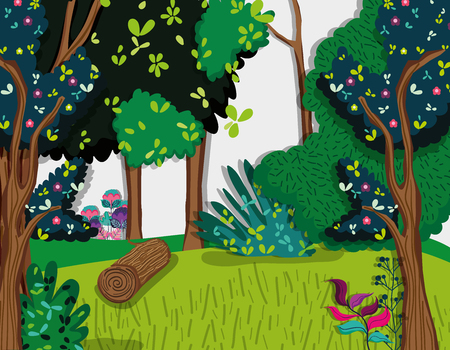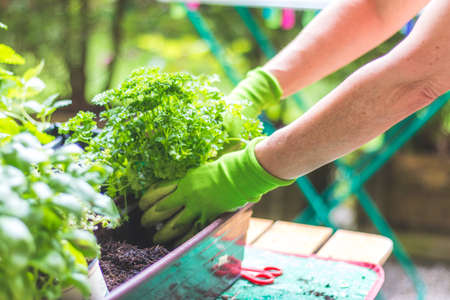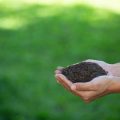1. Understanding Organic Gardening
Organic gardening is all about growing fruits, vegetables, herbs, and even flowers without using synthetic fertilizers, pesticides, or genetically modified organisms (GMOs). Instead, it relies on natural processes and materials to promote healthy plant growth and soil life. This approach supports a more sustainable and environmentally friendly way of living that’s becoming increasingly popular in American households.
What Makes a Garden “Organic”?
An organic garden focuses on working with nature rather than against it. That means using compost instead of chemical fertilizers, encouraging beneficial insects instead of spraying pesticides, and planting diverse crops to keep your garden balanced and healthy.
Key Elements of Organic Gardening
| Element | Description |
|---|---|
| Soil Health | Using compost, mulch, and cover crops to enrich the soil naturally. |
| Pest Management | Encouraging natural predators like ladybugs and using non-toxic solutions. |
| Plant Diversity | Growing a mix of plants to reduce pests and improve crop yield. |
| No GMOs | Avoiding genetically modified seeds or plants in your garden. |
| Sustainable Practices | Conserving water, recycling garden waste, and supporting local ecosystems. |
Why Choose Organic Gardening?
There are many reasons why families across the U.S. are turning to organic gardening:
Health Benefits
- Fewer chemical residues on homegrown food.
- Nutrient-rich produce straight from your backyard.
- A great way to stay active and spend time outdoors.
Environmental Impact
- Reduces pollution by avoiding synthetic chemicals.
- Promotes biodiversity by supporting pollinators and soil microbes.
- Lowers your carbon footprint by growing your own food locally.
Sustainable Living Alignment
Organic gardening fits perfectly into a sustainable lifestyle. It encourages mindful consumption, waste reduction through composting, and building stronger connections with nature. Whether you’re in a suburban neighborhood or a rural area, starting an organic garden can help you live more responsibly while enjoying fresh, delicious food at home.
If youre just getting started, dont worry—organic gardening is something anyone can learn. In the next section, well cover how to choose the perfect spot in your backyard for your new organic garden.
2. Choosing the Right Location and Planning Your Garden
Before you start planting, its important to find the best spot in your backyard for your organic garden. A good location can make all the difference in how well your plants grow. Lets look at what you need to consider when picking a spot and how to design a layout that fits your family’s lifestyle.
Finding the Ideal Spot in Your Yard
Start by observing your backyard at different times of the day. Most vegetables and herbs need at least 6–8 hours of direct sunlight each day. Pick an area that gets plenty of sun, preferably facing south or southwest if possible.
Key Factors to Consider:
| Factor | What to Look For |
|---|---|
| Sunlight | 6–8 hours of full sun daily |
| Soil Type | Loamy soil with good texture; avoid rocky or heavily compacted areas |
| Drainage | No standing water after rain; slightly elevated spots often drain better |
| Accessibility | Close to a water source and easy to reach from your home |
Testing Your Soil
You can buy a simple soil test kit at most garden centers or online. Check for pH levels (ideal is between 6.0 and 7.0), nutrients like nitrogen, phosphorus, and potassium, and drainage quality. If needed, mix in compost or organic matter to improve poor soil.
Planning Your Garden Layout
Your garden layout should fit your space and meet your family’s needs. Think about how much produce you want, how much time you have for maintenance, and whether you want raised beds, containers, or rows.
Common Layout Options:
| Layout Type | Description | Best For |
|---|---|---|
| Raised Beds | Wood-framed beds filled with soil; easy to manage and great for drainage | Small yards, beginners, families with kids |
| In-Ground Rows | Straight rows planted directly into the ground | Larger spaces, traditional gardens, experienced gardeners |
| Container Gardening | Pots or planters that can be placed on patios or decks | Apartments, renters, or small patios/backyards |
Design Tips for a Functional Garden Space
- Group plants by sunlight and water needs: This makes care easier.
- Create wide walking paths: Make sure you can move around without stepping on your plants.
- Leave room for tools: Keep space near a shed or storage bin for storing tools and supplies.
- Add composting space: A small corner compost bin helps recycle kitchen scraps into garden gold.
- Kiddie plot: If you have children, reserve a small section where they can dig and grow their own veggies.
Your Backyard Garden Blueprint Starts Here!
Selecting the right location is the first real step toward growing healthy organic food at home. With the sun shining on your chosen spot and a thoughtful layout in place, youre setting yourself up for gardening success.

3. Soil Preparation and Composting Basics
If youre starting an organic garden in your backyard, healthy soil is the foundation for growing strong, productive plants. Unlike conventional gardening, organic gardening relies on natural methods to build soil fertility. One of the best ways to do this is by using compost made from everyday kitchen and yard waste commonly found in U.S. households.
Why Soil Health Matters
Healthy soil is full of life—beneficial microbes, fungi, earthworms, and insects all play a role in helping your plants absorb nutrients and fight off diseases. When your soil is rich in organic matter, it holds water better, drains well, and provides the ideal environment for roots to grow deep and strong.
Understanding Your Soil Type
Before you start adding compost or planting anything, its helpful to know what type of soil you have. Heres a simple guide:
| Soil Type | Texture | Drainage | Ideal Use |
|---|---|---|---|
| Sandy | Gritty and loose | Drains quickly | Good for root vegetables with added compost |
| Clay | Sticky when wet, hard when dry | Poor drainage | Needs lots of organic matter to loosen up |
| Loam | Mildly crumbly, balanced texture | Excellent drainage and moisture retention | Ideal for most plants |
Composting Basics: Turn Waste into Garden Gold
Composting is the natural process of recycling organic material into nutrient-rich humus that feeds your soil. You don’t need fancy equipment—just a small corner in your backyard or a compost bin will do.
What You Can Compost (Common U.S. Items)
| Browns (Carbon-rich) | Greens (Nitrogen-rich) |
|---|---|
| Dried leaves Shredded newspaper Cardboard (non-glossy) Straw or hay Sawdust (untreated wood) |
Fruit & veggie scraps Coffee grounds & filters Grass clippings Tea bags (no staples) Crushed eggshells |
Avoid These in Your Compost Pile:
- Dairy products and meat scraps – they attract pests and smell bad.
- Pet waste – can carry harmful pathogens.
- Treated wood or glossy paper – may contain toxic chemicals.
How to Build Your Compost Pile
- Choose a spot: Pick a level area with good drainage and partial sun.
- Add layers: Alternate browns and greens in thin layers for balance.
- Aerate regularly: Turn the pile every week or two to add oxygen and speed up decomposition.
- Add water as needed: The pile should be about as moist as a wrung-out sponge.
- Wait: In a few months, youll have dark, crumbly compost ready to enrich your garden beds.
Troubleshooting Common Compost Problems
| Problem | Cause | Solution |
|---|---|---|
| Pile smells bad | Too much green material or poor airflow | Add more browns and turn the pile to aerate it |
| Pile is too dry | Lack of water or too many browns | Add water gradually and mix thoroughly |
| Pile not breaking down | Lack of nitrogen or too little moisture/airflow | Add greens like food scraps and turn more often |
The Payoff: Rich Soil for Healthy Organic Plants
Your homemade compost adds essential nutrients back into the soil naturally. It also helps improve structure and moisture retention without synthetic fertilizers. Over time, youll notice healthier plants, fewer pests, and better yields from your backyard organic garden—all starting with well-prepared soil.
4. Selecting Organic Seeds and Starter Plants
Starting your organic garden with the right seeds and plants is essential to growing healthy, chemical-free produce. Choosing certified organic seeds and seedlings ensures that your garden stays true to organic principles from the very beginning.
Where to Buy Certified Organic Seeds and Seedlings
You can find certified organic seeds and starter plants at a variety of reliable sources across the U.S. Here are some popular options:
| Source | Details |
|---|---|
| Local Garden Centers | Many local nurseries carry a selection of USDA-certified organic seeds and plants. Look for labels that say “certified organic.” |
| Online Retailers | Websites like Johnny’s Selected Seeds, High Mowing Organic Seeds, and Seed Savers Exchange offer a wide range of certified organic options shipped nationwide. |
| Farmers Markets | You might find local growers selling organic seedlings in spring. Ask vendors about their growing practices to make sure they align with organic standards. |
Choosing the Right Plants for Your Region
The U.S. has a variety of climates, so it’s important to pick vegetables and herbs that thrive in your specific region. Check your USDA Hardiness Zone to determine what grows best in your area. Below are some easy-to-grow organic options based on general climate zones:
| Region | Suggested Vegetables & Herbs |
|---|---|
| Northeast (Zones 4-7) | Lettuce, kale, carrots, basil, mint |
| Southeast (Zones 7-9) | Tomatoes, peppers, okra, oregano, parsley |
| Midwest (Zones 4-6) | Zucchini, green beans, radishes, cilantro, thyme |
| Southwest (Zones 5-9) | Corn, squash, chiles, rosemary, sage |
| West Coast (Zones 7-10) | Kale, peas, arugula, dill, chives |
Tips for Buying Quality Organic Seeds and Plants
- Look for certification: Choose seeds labeled “USDA Certified Organic.” This guarantees they were grown without synthetic chemicals or GMOs.
- Avoid treated seeds: Some seeds are coated with fungicides or pesticides—make sure yours are untreated if youre going organic.
- Select disease-resistant varieties: These will give you a better chance at a successful harvest without needing chemical treatments.
Selecting the right seeds and starter plants is one of the most exciting steps in building your backyard organic garden. With a little research and planning based on your climate zone, youll be off to a great start!
5. Maintaining Your Garden Naturally
Keeping your organic garden healthy and productive doesnt require synthetic chemicals. With a few simple, natural techniques, you can maintain a thriving backyard garden thats safe for your family, pets, and the environment. Here’s how to care for your garden using organic methods suited for American backyards.
Watering the Right Way
Proper watering is key to plant health. Overwatering can cause root rot, while underwatering leads to stress. The goal is deep, infrequent watering that encourages roots to grow deep into the soil.
Tips for Organic Watering:
- Water early in the morning: This reduces evaporation and prevents fungal diseases.
- Use soaker hoses or drip irrigation: These deliver water directly to roots without wetting leaves.
- Collect rainwater: Install a rain barrel to use free, chemical-free water from your roof runoff.
Mulching for Moisture and Weed Control
Mulch is an organic gardener’s best friend. It helps retain moisture, suppress weeds, and regulate soil temperature.
Common Organic Mulch Materials:
| Type of Mulch | Benefits |
|---|---|
| Straw (not hay) | Suppresses weeds and breaks down over time to enrich soil |
| Wood chips | Long-lasting and attractive for pathways or around perennials |
| Dried leaves | Easily available in fall; adds nutrients as they decompose |
| Grass clippings | Nitrogen-rich; great for vegetable gardens (use in thin layers) |
Weeding Without Chemicals
Weeds compete with your plants for water and nutrients. Regular weeding keeps them under control naturally.
Organic Weeding Techniques:
- Hand-pulling: Best after rain when soil is soft.
- Solarization: Cover soil with clear plastic before planting season to kill weed seeds using sunlight.
- Corn gluten meal: A natural pre-emergent herbicide that prevents seed germination (use cautiously).
Pest Control the Natural Way
You don’t need harsh sprays to keep bugs at bay. Nature provides plenty of tools to manage pests organically.
Natural Pest Control Methods:
| Method | Description |
|---|---|
| Companion planting | Certain plants deter pests—like marigolds repelling aphids or basil protecting tomatoes. |
| Diatomaceous earth | A fine powder that damages insect exoskeletons; safe for humans and pets. |
| Nematodes | Tiny beneficial organisms that target soil-dwelling pests like grubs. |
| Neem oil spray | An organic pesticide effective against many soft-bodied insects like mites and whiteflies. |
A Few Extra Tips:
- Rotate crops each season: Helps prevent disease buildup and pest infestations.
- Add compost regularly: Keeps soil healthy and plants strong enough to resist pests naturally.
- Create habitats for beneficial insects: Ladybugs, lacewings, and bees all help control pests or pollinate your garden.
Caring for your backyard garden organically may take a bit more hands-on work, but it pays off in healthy plants, nutritious harvests, and a clean environment right outside your door.
6. Harvesting and Seasonal Garden Planning
Knowing when to harvest your crops and how to plan your garden throughout the year is key to keeping a productive organic garden in your backyard. The U.S. gardening calendar varies by region, but there are general guidelines that can help you make the most of every season.
When to Harvest Common Crops
Harvesting at the right time ensures the best flavor and nutrition from your produce. Here’s a simple guide to help you know when to pick some of the most common garden crops:
| Crop | Typical Harvest Time | Signs Its Ready |
|---|---|---|
| Tomatoes | Mid to late summer | Fully colored, slightly soft when squeezed |
| Lettuce | Spring and fall | Crisp, full heads or leaves before bolting |
| Zucchini | Summer | 6–8 inches long, tender skin |
| Carrots | Late spring through fall | Tops about 1 inch across; loosen soil to check size |
| Cucumbers | Summer | Firm, green, and 6–9 inches long depending on variety |
| Pumpkins | Fall (before first frost) | Deep color, hard rind, vine begins to die back |
Planning Your Garden for All Seasons
A successful organic garden doesn’t have to stop producing after summer. With proper seasonal planning, you can grow something almost all year round. Heres a basic guide based on typical U.S. growing seasons:
Spring (March – May)
- Sow cool-season crops like lettuce, spinach, peas, radishes, and carrots.
- This is also a good time to start warm-season crops indoors (like tomatoes and peppers).
Summer (June – August)
- Main harvest season for many fruits and vegetables.
- Sow second rounds of fast-growing crops like bush beans and cucumbers.
Fall (September – November)
- Sow fall crops like kale, broccoli, turnips, and garlic.
- Add mulch to protect soil and extend growing time.
Winter (December – February)
- If youre in a warmer zone or use cold frames/greenhouses, grow leafy greens like spinach or arugula.
- This is also the perfect time to plan next year’s garden layout and order seeds.
Create a Seasonal Planting Calendar
A planting calendar tailored to your USDA Hardiness Zone helps keep your garden productive throughout the year. You can find free regional planting calendars through local extension services or gardening apps that track dates based on your zip code. Keeping a simple chart like this can be helpful:
| Month | Sow Indoors | Sow Outdoors |
|---|---|---|
| January | Lettuce, onions (southern zones) | – |
| March | TOMATOES, PEPPERS (most zones) | POTATOES, PEAS, RADISHES (cool zones) |
| May | – | CORN, BEANS, SQUASH (most zones) |
| August | – | BROCCOLI, SPINACH (fall crops) |
This approach ensures youre always one step ahead—either harvesting or planting something new!


